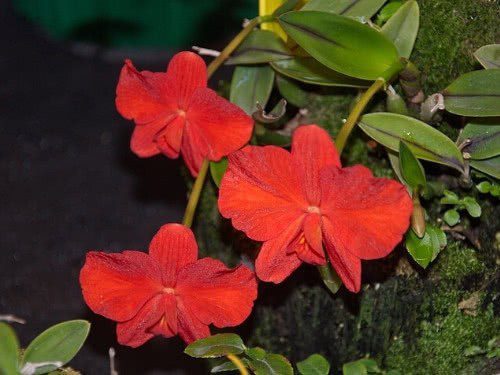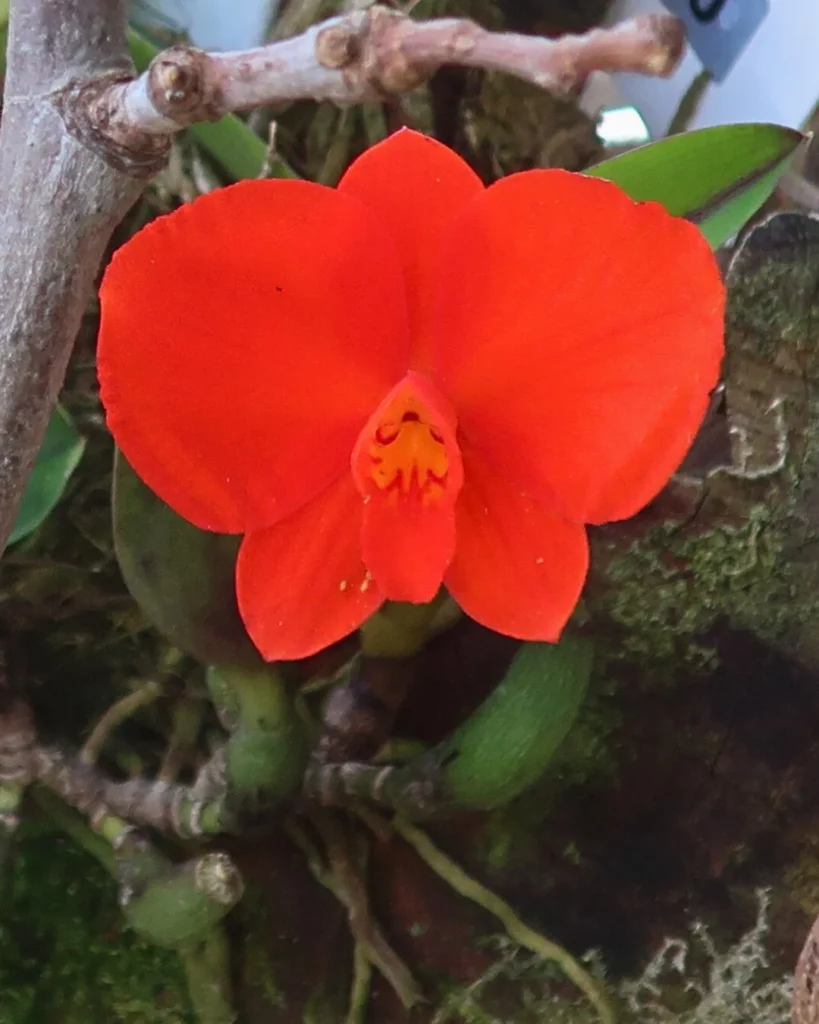The Scarlet Sophronitis (Cattleya coccinea) is a small epiphytic orchid native to the states of Minas Gerais, Espírito Santo, Rio de Janeiro, São Paulo, Paraná, Santa Catarina, and Rio Grande do Sul in Brazil, where it thrives in Atlantic Forest areas at altitudes ranging from 600 to 1700 meters. It boasts rare naturally red flowers, making it highly sought after by orchid enthusiasts and cultivators. Until recently, it was better known as Sophronitis coccinea, but it has been reclassified under the new APG IV system. It exhibits sympodial growth, with small, spindle-shaped, single-leaved pseudobulbs that densely grow over the rhizome, forming clumps.

Its leaves emerge at the apex of pseudobulbs, they are leathery, folded together, elliptical, sword-shaped, and dark green. The flowers, the highlight of this plant, are a vibrant red color with rounded and well-spaced petals, reminiscent of a star with rounded points. They have a trilobed and tubular central lip, with yellow to orange hues and red lines.
The stems supporting the flowers carry only one each. Flowering occurs between late winter and early spring and can last for 45 days. This species is extensively used in hybrid development as it’s one of the few orchid species that can impart the red color to its descendants’ flowers.
Commonly cultivated in pots or on trees in gardens, it exudes a unique delicacy. Orchids, in general, attract pollinators, making the garden even more intriguing. If you have an orchid collection, this miniature Cattleya should not be missing.
However, note that it’s not recommended for beginners due to its delicate and demanding nature. There are also varieties with yellow flowers, referred to as C. coccinea flava or C. coccinea aurea, and with orange flowers, the rare C. coccinea rossiteriana, seen less often in cultivation.

Considered a challenging plant to cultivate, the red orchid can become a garden favorite if it adapts well to the environment. It should be grown under filtered light, with about 50% shade cloth. Originating from mountainous regions in southern and southeastern Brazil, it thrives in consistently humid conditions while preferring milder temperatures. This delicate orchid will not thrive in hot or dry climates.
It should be potted in a high-quality substrate formulated for epiphytic orchids, enriched with sphagnum moss to retain moisture without suffocating the roots. Watering should be regular, almost daily, allowing the substrate to slightly dry between waterings to prevent root rot. Thus, avoid using saucers beneath the pots under any circumstances.
It’s advisable to cultivate the Scarlet Sophronitis in small ceramic or clay pots with ample drainage holes, or on pieces of wood and slatted baskets. This orchid is demanding when it comes to its environment. Therefore, maintain high humidity using a humidifier, a water source, or trays of water in the plant’s vicinity. The ideal cultivation temperature ranges from 10 to 30°C (50 to 86°F), with good ventilation (avoid cultivating in greenhouses).
Due to its small size, avoid excessive fertilization; opt for organic or soluble orchid fertilizers. It can be propagated easily by dividing the clumps, ensuring that each new division has at least 4 mature and healthy pseudobulbs along with a leading growth shoot. Commercially, it’s multiplied in laboratories through meristem culture and seed germination.


